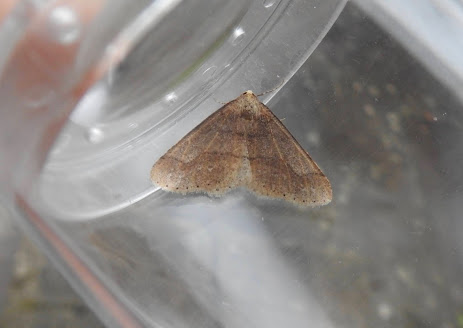After a very wet week the continuing mild weather left me optimistic that my search for early signs of spring might bear fruit. The cloudy skies and hint of rain in the air meant that insects would not be featuring, and apart from a few clumps of Snowdrops I didn't see any flowers either. So it would be down to birds again.
Aside from observing the gradual switching on of birdsong, my main emphasis in spring has always been bird migration. This morning a single Stonechat at the dragonfly pools was the forerunner of what was to be the main event of the day. Stonechats don't migrate far, the British upland population heads for the coast and some make it to France over the winter. This year, as is typical, a few found no reason to go any further than the Midlands, and at least four survived the freezing conditions at Morton Bagot through the first half of February.
As I approached the flash field I came across another five, and half an hour later these had moved to the pool field where their numbers had swelled to 16. After back-tracking in a failed attempt to find a Jack Snipe, I relocated the flock in the original weedy field. At least nine hopped from plant to plant over the ridge, and I then found that four had remained in the pool field. Walking south over the ridge field I found another four, so if the Dragonfly pool still held one I would have a new site record. There was no sign of it though, so I headed down to the south end in the hope one might be there. This move produced a flock of 80 Lesser Redpolls and 62 Linnets but no Stonechats. However, once back at the dragonfly pools I located three more Stonechats giving me a record count of 20 for the site.
 |
| Three of the Stonechats at the pool field |
Migration doesn't only involve arriving birds. A flock of 70 Fieldfares heading north-east could reasonably be considered to be departing migrants.
Ironically the only new species for the year was not a migrant at all. Two immature Mute Swans flew onto the pool and spent a few minutes there. Clearly the lack of ice meant that waterfowl could reclaim the site.
 |
| Mute Swans |
A large flock of Black-headed Gulls flew north in a v-formation before pitching down to investigate the pasture just over the hill behind the flashes. I am ever hopeful of finding a Mediterranean Gull in the flocks which can build up at the end of February, so my frustration that they had dropped out of sight was considerable. I was left with 16 Teal, 29 Lapwings, seven Snipe, and eight Mallard to look at.
Fortunately, an hour later they reappeared and landed on the furthest flash. Ten minutes later I realised they were all Black-headed Gulls. The best way to show them was to scan across the flock with the camera in video setting.
In a further bid to convince myself that spring was happening I counted singing birds on my circuit. It's too early in the year to start a breeding survey, but it was tempting to imagine that the singing Song Thrushes (four), Robins (eight), Chaffinches (five), Dunnocks (six), Wrens (six), Reed Buntings (four), and Skylarks (four) were all planning to remain through the summer.
As usual I saw plenty of Roe Deer (five) Muntjac (one) and several Hares across the site.
 |
| Roe Deer |
I plan to put the moth trap out tonight, so hopefully I'll be able to get the mothing off the ground at last.
PS: I caught seven moths, managing to misidentify three of them before UK moth ID put me straight. They were as follows:
 |
| Oak Nycteoline (very worn) |
 |
| Dotted Border |
 |
| A "dark" Chestnut |
A further photo of one of the Chestnuts taken in better light confirms that UKMothID knows more about these things than I do. Now there's a surprise !
 |
| Chestnut |
Back to the drawing board.
No comments:
Post a Comment